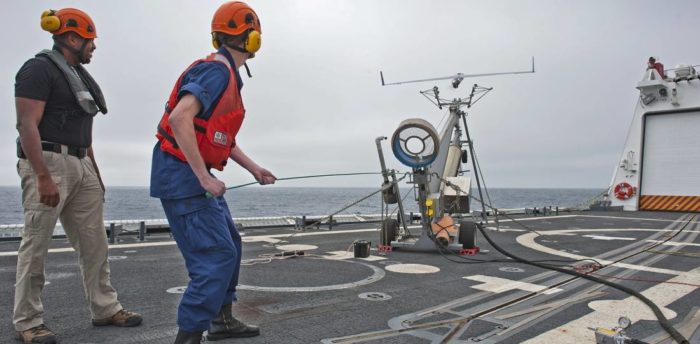The US Coast Guard signed a will $117 million contract with Boeing subsidiary Insitu, to receive a small unmanned aircraft system. The contract covers installation and deployment of the system, and provides 200 hours of flight time per 30-day patrol.
A draft request for proposal was released in March 2017, stating that the Coast Guard was looking for a “persistent, tactical airborne intelligence, surveillance, and reconnaissance (ISR) capability that can remain airborne for at least twelve hours per day.”
[smlsubform prepend=”GET THE SAFETY4SEA IN YOUR INBOX!” showname=false emailtxt=”” emailholder=”Enter your email address” showsubmit=true submittxt=”Submit” jsthanks=false thankyou=”Thank you for subscribing to our mailing list”]
As Cmdr. Daniel Broadhurst, unmanned aircraft systems division chief in the Office of Aviation Forces, said:
The UAS has already proven itself to be a transformational technology, and the deployment of this capability to the entirety of the [National Security Cutter] fleet is an incredibly important first step in realizing the Coast Guard’s vision of fleet-wide UAS implementation.
Until now, USCG has been using ScanEagle in a limited basis when the system deployed aboard the USCGC Stratton. ScanEagle helped the Coast interdict an estimated $165 million worth of cocaine during a two month period in 2017.
ScanEagle can remain on air for more than 24 hours, can cruise at 55 knots with a maximum speed of 90 knots, and has service ceiling of 15,000 feet. The system is shot from a pneumatic launcher and recovered using a hook and arresting wire. ScanEagle is 8.2-feet long and has a 16-foot wingspan.
ScanEagle hardware will be installed on USCGC James this fall, then on USCGC Munro in early 2019, and on USCGC Bertholf in late spring or early summer 2019.

































































